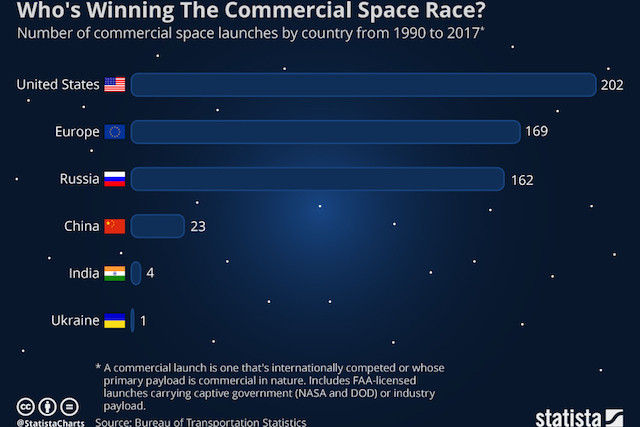The launch is hugely important for the commercial space industry; for the first time since the start of the space race between the U.S. and the Soviet Union, a private company has managed to build and successfully launch the world’s most powerful rocket.
Even though the rocket quite literally carried a dummy payload (in a Tesla), the Falcon Heavy can carry a much heavier and more complex load into orbit. It can also do that at a competitive price of $90 million while SpaceX’s Falcon 9 costs $62 million per flight.
By comparion, the United Launch Alliance’s Atlas V has a starting cost per flight of $109 billion. SpaceX’s new rocket could prove an attractive proposition for NASA who are building their own massive rocket called the Space Launch System. Over the past decade, that has ratcheted up $19 billion in development costs and it is set to cost about $1 billion per launch - 10 times as much as the Falcon Heavy. Even when it becomes operational, it will only fly twice per year.
Even though private companies started reaching for the stars in the early 1980s when French company Arianespace was founded, customers were generally reliant on U.S. and Russian government rockets until relatively recently. Increased competition has brought more investment and led to a new commercial space race. That of course begs the question: who’s winning it?
This infographic was created with Bureau of Transportation Statistics data and it shows that between 1990 and 2017, the U.S. had 202 commercial space launches, 70 of which were Atlas and 57 of which were Delta rockets. Europe comes second in the commercial space launch league with Russia a close third with 162.
